When it comes to dental implants, one question often arises: is crown necessary after implant? The answer is yes, and understanding the role of crowns—both temporary and permanent—is crucial to navigating the dental implant process effectively. This article will delve deep into the significance of temporary crowns while you await your permanent solution, shedding light on their purpose, care, and the journey from temporary to permanent solutions.
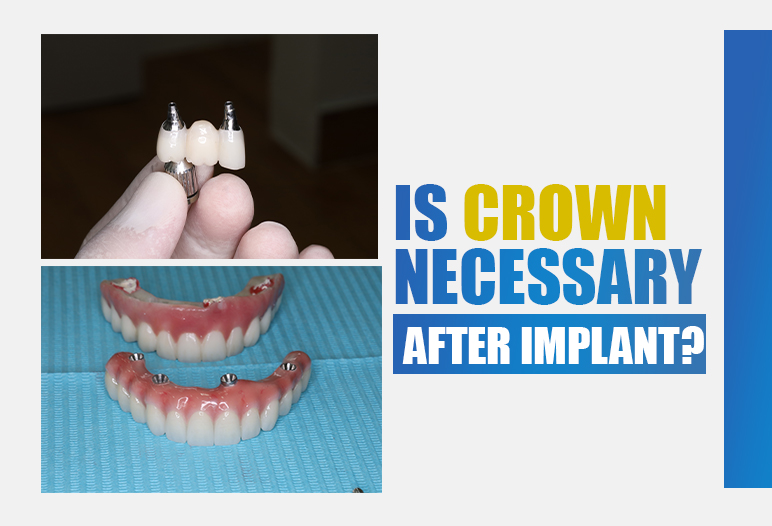
Understanding the role of temporary crowns
Temporary crowns serve as a bridge between tooth loss and the final restoration. They play a vital role in maintaining aesthetics and function during the implant healing period. With the right temporary crown, patients can experience improved confidence and day-to-day functionality while ensuring that the implant site remains healthy and protected.
Definition and purpose of temporary crowns
Temporary crowns are crafted to shield the abutment of an implant, particularly when there’s a gap from a missing tooth. These temporary solutions are designed to mimic the appearance of natural teeth but are made from less durable materials than their permanent counterparts.
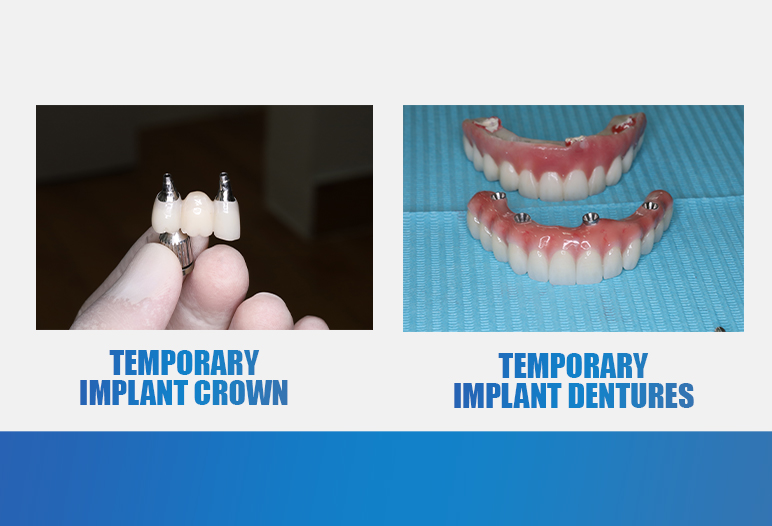
The primary purpose of a temporary crown is multifaceted—it not only restores the visual aspect of your smile but also allows for normal chewing functions. Chewing food becomes essential during this time as it contributes to the overall health of your jaw and gums. However, as these crowns are not meant to last indefinitely, they require special attention to ensure they remain in place throughout the healing process.
Benefits of using temporary crowns during the implant process
The advantages of employing temporary crowns during the waiting period for permanent crowns extend beyond mere aesthetics:
Improved Aesthetics: A temporary crown fills the gap left by a missing tooth, enhancing your smile and preventing any self-consciousness that may accompany tooth loss. Particularly for front teeth, this can significantly elevate your confidence in social interactions.
Functional Restoration: While a temporary crown may not have the strength of a permanent crown, it allows you to chew food more normally, which aids digestion and maintains oral engagement. Being able to eat comfortably helps you maintain a balanced diet, even without the final crown.
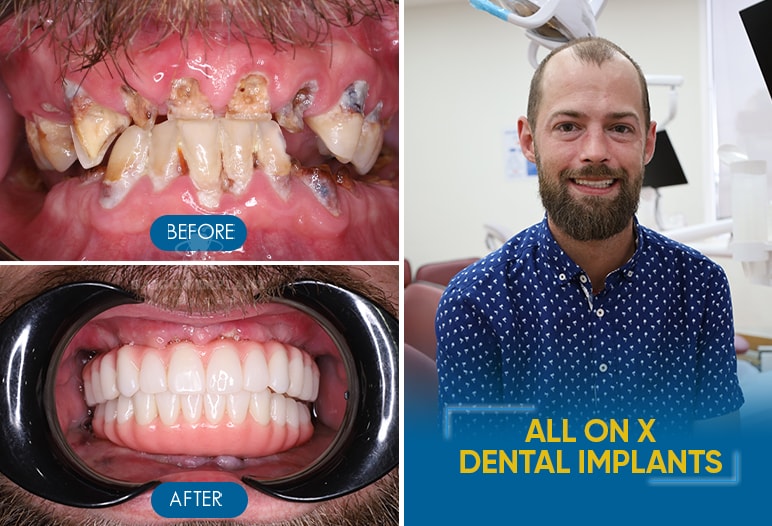
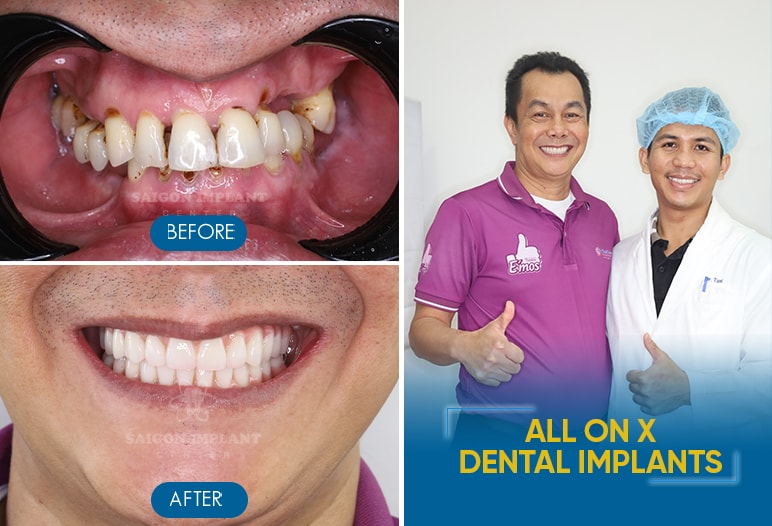
Protection of the Implant: Area Temporary crowns safeguard the gums and the implant abutment from external factors, including bacteria and foods that could potentially hinder the healing process. They also help manage sensitivity at the implant site, providing comfort during recovery.
Management of Tooth Distance: Wearing a temporary crown helps evaluate the spacing between adjacent teeth, ensuring that the permanent crown will fit perfectly when it’s ready. This preemptive measure can save time and effort in adjusting the permanent solution later.
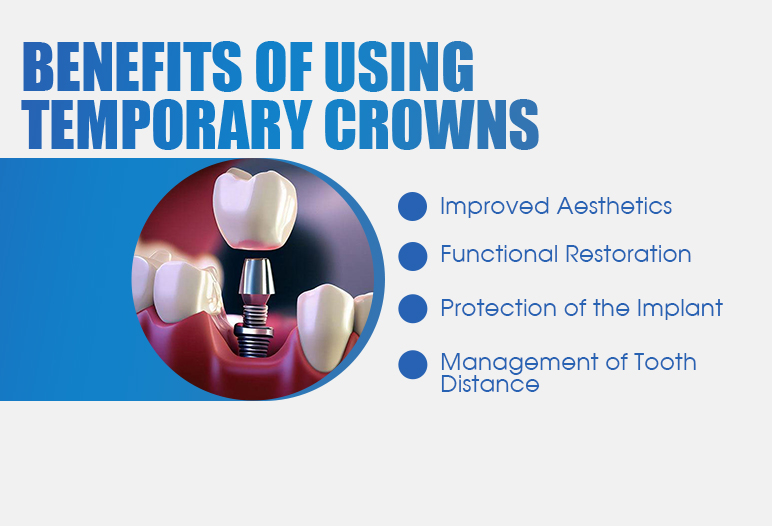
Types of Temporary Implant Crowns
Time between abutment and crown: After the abutment is placed, the soft tissue needs time to heal, usually taking 2 to 3 weeks. During this period, a temporary crown can be used. Once the soft tissue has healed and everything is properly adjusted, the permanent crown will be fabricated and placed.
Choosing the right temporary implant crown is important to protect the implant, provide comfort to the patient, and boost confidence in social interactions. Below are some common types of dental implant temporary crowns, each with its own features in terms of material, durability, and aesthetics.
- Acrylic crown: This is a common type of temporary crown, affordable and easy to shape, but it is not very durable and can wear down easily.
- Composite crown: Offers a more natural appearance and is more durable than acrylic, but it is more expensive.
- Metal-composite crown: Combines a metal frame with a composite exterior, providing greater strength and stability for the implant, but at a higher cost.
- Metal-ceramic crown: Enhances durability and aesthetics with a ceramic layer, but the cost is relatively high.
- Full ceramic crown: Offers high aesthetics and resembles natural teeth closely, but its durability is not as strong as permanent ceramic crowns, and it comes at a higher price.
- Immediate temporary crown: Placed immediately after the implant is inserted, helping the patient regain confidence right away, but it has lower durability.
- Custom-made crown: Designed specifically for the patient, ensuring a perfect fit and high aesthetics, but it is more expensive.
Each type of temporary implant crown has its own advantages. Choosing the right one will provide the patient with an effective temporary solution while waiting for the permanent crown.
How Much Do Temporary Teeth on Implants Cost?
When getting dental implants, apart from the implant posts fixed into the jawbone, temporary teeth play an essential role. These temporary teeth improve aesthetics and function while waiting for the permanent crowns to be placed. So, how much do temporary teeth on implants cost?
Factors Affecting the Cost of Temporary Teeth on Implants
The cost of temporary teeth on implants depends on several factors:
- Material of Temporary Teeth: Plastic teeth are more affordable but offer lower durability and aesthetics. Composite teeth are more durable and look better but are more expensive.
- Number of Teeth Needed: Single tooth or full-arch restoration (e.g., All-on-4 or All-on-6) significantly affects the total cost.
- Technology Used: Modern crafting technology produces more natural-looking and better-fitting temporary teeth but may increase the cost.
- Reputation of the Dental Clinic: Clinics with transparent pricing and high-quality services often provide better results.
Dental implant temporary crown
At Saigon Dental Implants Center in Vietnam, the cost of temporary teeth on implants is calculated as follows:
| OTHER COSTS | DENTAL IMPLANTS COST (USD) | DISCOUNT PRICE (USD) |
| Abutment | 240 (Free for patients deciding on treatment) | |
| Bone graft | 300 - 500 | 200 - 320 |
| Sinus lifting | 500 - 700 | 320 - 520 |
| Ball Abutment implant/ Locator implant | 500 | 240 |
| Provisional dental restoration | 45/tooth (Free for patients deciding on treatment) | |
| Immediate, painless temporary dental restoration | 160/tooth | |
| Instant, high-strength provisional denture supported by All-on-4/6 implants | 600 – 800/jaw | |
All cases of temporary teeth on implants, including full-arch temporary teeth (such as All-on-4 or All-on-6), are priced as a package, covering both crafting and fitting services.
The duration of temporary crowns
A common inquiry surrounding temporary crowns is the duration for which they need to be worn. Understanding this timeframe is pivotal in preparing for the transition to a permanent crown.
Typical timeframe for wearing temporary crowns
Most commonly, the healing period lasts a few weeks; however, if complications arise or if bone growth takes longer, this timeframe may extend. It is essential to follow your dentist’s recommendations regarding timing to ensure optimal outcomes.
Temporary crowns on implants are typically placed after the implant is inserted into the jaw, though the exact timing depends on factors like the patient’s health and the implant’s healing process. There are two common times for placing a temporary crown:
- Immediate Placement: In some cases, the temporary crown is placed immediately after the implant. This allows the patient to enjoy a temporary smile and feel confident right away. However, the crown is temporary and will need to be replaced once the implant is stable.
- Delayed Placement: If the implant requires time to heal and fuse with the bone (a process called osseointegration), the temporary crown is placed once the implant has fully stabilized, usually a few weeks to months after placement.
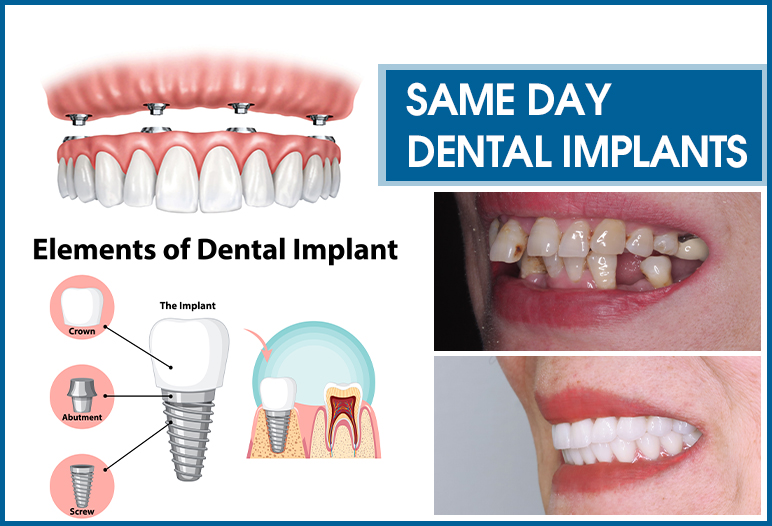
Factors affecting the length of time for temporary crowns
Temporary crowns are usually used for about 2 to 6 months, depending on the healing time of the implant and the patient’s health. Once the implant has fully healed and stabilized, the temporary crown will be replaced with a permanent one. During this period, the temporary crown should be monitored and replaced if it becomes damaged or unstable.
Several factors can influence the length of time that temporary crowns are needed. Firstly, the individual’s healing rate plays a significant role. Some patients may heal quickly, while others might face challenges due to underlying conditions such as diabetes or smoking habits.
Moreover, the complexity of the dental implant procedure itself impacts timing. If multiple implants are involved or if there were additional procedures performed (like bone grafting), this could prolong the waiting period for the permanent crown. Lastly, the fabrication time for the custom permanent crown can vary depending on the dental lab’s efficiency and workload.
Temporary crowns vs permanent on Implants
Understanding the differences between temporary and permanent crowns is crucial to grasping their respective roles in the dental implant process.
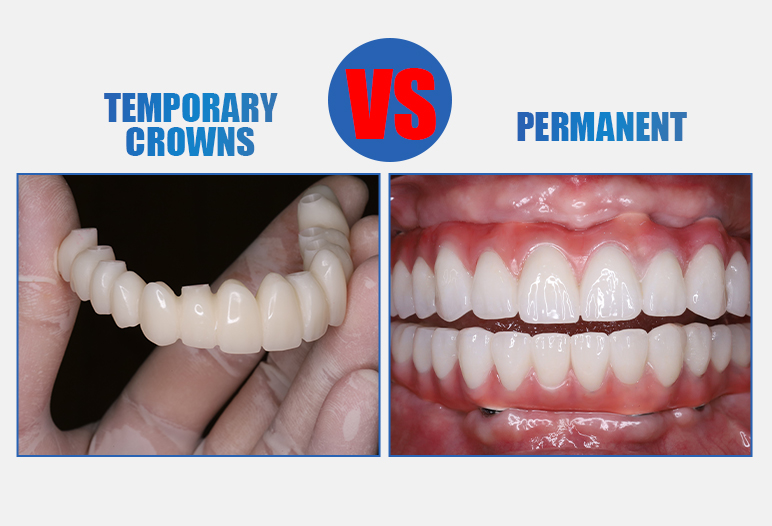
Key characteristics of temporary crowns
Temporary crowns are primarily designed for short-term use and offer several distinct characteristics:
Material Composition: Temporary crowns are typically made from acrylic or composite materials, which are less durable but can be crafted quickly to fulfill immediate needs. While they simulate the color of natural teeth, they may not match perfectly, especially in terms of finish and shine.
Functionality: These crowns provide basic functionality for chewing and biting but cannot bear the same weight or withstand forces as permanent crowns. Patients are advised to exercise caution with what types of food they consume to ensure the integrity of the temporary crown.
| Feature | Temporary Crown | Permanent Crown |
| Material | Acrylic, composite | Porcelain, metal, or a combination of both |
| Durability | Less durable, prone to wear | Very durable, can withstand daily chewing |
| Aesthetic Appeal | Mimics natural tooth color, but may not match perfectly | Closely matches the natural shape, size, and color of teeth |
| Functionality | Basic functionality for chewing | Strong enough to withstand chewing and biting forces |
| Duration of Use | 2 to 6 months | Long-lasting, can last many years |
| Cost | Lower cost | Higher cost |
| Flexibility | Easy to replace or adjust | Less flexible, requires minimal adjustments after placement |
| Maintenance | Requires replacement if damaged or unstable | Minimal maintenance, only replaced when necessary |
| Purpose | Temporary use during healing or waiting for permanent crown | Permanent solution for missing teeth |
| Suitability for Implant | Suitable for the early stages of implant healing | Suitable when the implant is fully healed and stabilized |
Advantages of permanent crowns over temporary crowns
Permanent crowns, on the other hand, offer significant advantages:
ermanent crowns are crafted from stronger materials like porcelain, metal, or a combination of both, making them durable enough to withstand daily chewing and endure wear for years.
Aesthetic Appeal Permanent crowns can be custom-made to match the shape, size, and shade of your natural teeth closely. This ensures a seamless integration with your smile, providing a more aesthetically pleasing outcome.
Long-Term Solution Once placed, permanent crowns are intended to stay intact for many years, requiring less frequent replacements and adjustments compared to temporary crowns.
Proper care for temporary crowns
Caring for a temporary crown is paramount to ensure its longevity and effectiveness throughout the healing process of your dental implant.
Oral hygiene practices to maintain temporary crowns
Maintaining excellent oral hygiene is critical when wearing temporary crowns to prevent infections and ensure their stability:
Regular Brushing Patients should continue their regular brushing routine, being careful not to brush too vigorously around the temporary crown. Gentle brushing helps keep the area clean without dislodging the crown.
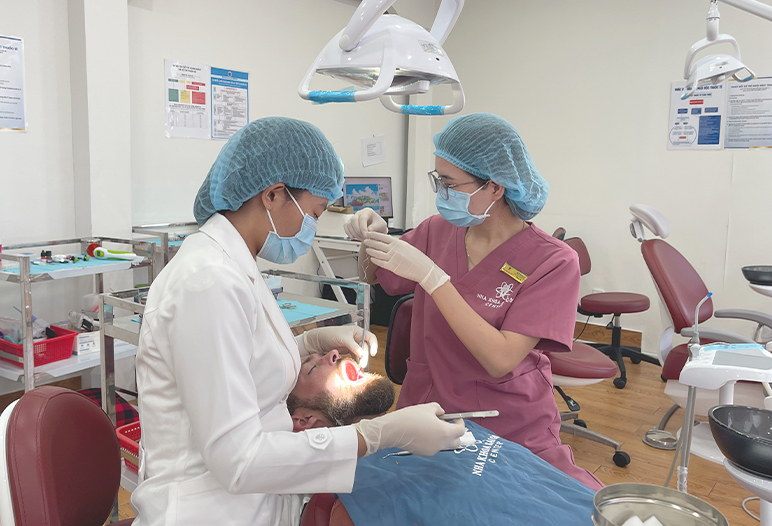
Flossing Techniques Flossing becomes even more vital when you have a temporary crown. Patients should use gentle back-and-forth motions to avoid damaging the crown. Special flossers designed for dental work can be helpful in maneuvering around the temporary fixture.
Frequent Dental Check-Ups It’s advisable to keep up with dental appointments during the period of temporary crown usage, allowing your dentist to monitor the implant site and address any potential issues promptly.
Foods and drinks to avoid with temporary crowns
Certain foods can compromise the integrity of temporary crowns, leading to potential complications:
Sticky and Hard Foods Foods like caramel, nuts, and sticky candies can easily pull off a temporary crown. It’s best to avoid them completely until the permanent restoration is in place.
Excessively Hot and Cold Foods Extreme temperatures can affect the temporary bonding material, causing the crown to shift or loosen. Consuming hot soups or icy drinks should be done cautiously or avoided altogether.
Sugary Foods High sugar intake can lead to plaque buildup, especially at the gum line where the temporary crown meets the gums. Since a small gap may exist, bacteria can thrive, potentially leading to decay around the implant area.
Frequently asked questions
As you navigate through the process of receiving a dental implant, you may encounter several queries. Here are a few common ones:
How do I know when my permanent crown is ready?
Your dental team will keep you updated. Typically, once the healing period is complete and the implant has fused with the bone, your dentist will take impressions and order the crown. You’ll receive notices leading up to the placement date.
Can I still eat normally with a temporary crown?
While you can generally resume normal eating patterns, it’s crucial to be cautious. Focus on softer foods and avoid items that could potentially damage or dislodge your temporary crown.
Conclusion
In summary, understanding the importance of temporary crowns in your dental implant journey is crucial. They serve as a temporary and aesthetic placeholder while preparing your permanent crown. From maintaining proper oral hygiene to avoiding certain foods, the care you give to your temporary crown directly influences the success of your implant. Ultimately, knowing that a crown is necessary after an implant can guide you through your dental transformation, ensuring that you achieve a smile that is both beautiful and functional for years to come.

 Google Reviews
Google Reviews Call
Call
SAIGON IMPLANT CENTER
Best dentist in Vietnam
Saigon Implant Center - Dental Clinic utilizes the latest technology for specialized treatment in the field of Single implant, full jaw implants, All on 4 implants, All on 6 implants, Zygoma implant....
SAIGON IMPLANT CENTER
Best dentist in Vietnam
Saigon Implant Center - Dental Clinic utilizes the latest technology for specialized treatment in the field of Single implant, full jaw implants, All on 4 implants, All on 6 implants, Zygoma implant....